It is a truth universally acknowledged: children love playgrounds and playing in them – preferably, of course, together with friends. However, many playgrounds do not offer every child the opportunity to do so. Children with physical disabilities, especially those who depend on a wheelchair, are often confronted with insurmountable obstacles in playgrounds – and are quickly left out of the game. Therefore, playgrounds must offer barrier-free playground equipment that all children, without exception, can use. However, there are a few things to consider to ensure that inclusion on the Playground is successful. In this blog post, we explain what.
Table of contents
- Barrier-free playground equipment promotes independence
- Inclusion in the Playground promotes social behaviour
- Barrier-free playground equipment – What should be considered?
- Types of physical disability – what is specifically required from playground equipment?
- Barrier-free playground equipment
Barrier-free play equipment promotes independence
Barrier-free playground equipment fulfils one primary purpose – in addition to providing plenty of fun: it allows children with physical disabilities to play independently. For them, regular playground equipment can often only be used with outside help. With an adult who supports and holds them or lifts them onto a piece of play equipment. This undoubtedly reduces the fun – and at the same time the self-confidence. Yet this is incredibly important for children to become independent.
Thanks to barrier-free playground equipment, children with physical disabilities are not confronted with unsolvable problems, but above all, they no longer feel helpless. Instead, the playground equipment enables them to take the initiative themselves and to engage in play with other children. In this way, results are guaranteed, and confidence in their own abilities increases – just like self-esteem.
Note: Whether younger or older children, in play, they test out their environment and how to interact with each other. They learn this way, and the play makes a decisive contribution to the child’s development. How exactly this happens and what different types of play there are, we explain in our blog post “Play development in early childhood: What are the different types of play?
Inclusion on the Playground promotes social behaviour
Everyone benefits from barrier-free playground equipment, especially children who are dependent on it due to a physical disability. The playground equipment allows them to have a carefree time with other children, where they can devote themselves to playing without worrying about their limitations. But children without a disability also derive clear benefits. By playing with children with physical disabilities, they learn how to interact with them properly. This is especially beneficial for younger children. Because the earlier you encourage their social behaviour, the more pronounced it will be later in life. Playing together with children with a physical disability teaches them that this requires consideration and empathy as well as openness towards life worlds that are very different from their own. This is a good opportunity for them to look beyond their own horizons and develop understanding, which is an important component of successful inclusion.
You can read more about inclusion and how it differs from the term integration in our blog post “The difference between integration and inclusion in an educational context”.

Barrier-free playground equipment – What needs to be considered?
There is a lot to consider when planning a playground with barrier-free playground equipment. It is therefore advisable for planners to obtain sufficient information and advice in advance and, if possible, to include the later users of the Playground in the planning. As the target audience, they can speak from experience about their everyday life with a physical disability and report on what demands barrier-free playground equipment should fulfil for them.
Good infrastructure and general accessibility
It’s not only the playground equipment that matters. The location of the Playground is also crucial. Long distances on foot can often be strenuous to barely manageable for children with a physical disability, including those who rely on a wheelchair or walking aid. Therefore, an accessible playground should have good transport links, preferably with parking within easy reach. The Playground should also be generally barrier-free so that children can move easily between the individual playground equipment. It should be on level ground and not have any dividing elements that have to be climbed over in order to reach a piece of playground equipment. The same applies to stairways to the Playground. If these are unavoidable, at least a ramp should be available for wheelchair users.
Joint play fun
First and foremost, accessible playground equipment should enable children to play happily together; it should be possible for both children with and without a physical disability to use it. And they should do so together. The goal is to make the Playground a place of inclusion. It is also important that all playground equipment has a “universal design”. In this way, no playground equipment is marked as ‘different’, and no child feels excluded or as if they receive special treatment.
High-quality play equipment
In principle, the requirements that apply to standard playground equipment also apply to accessible playground equipment: A holistic range of play equipment is desirable. Equipment that can only be stepped on or that merely offers a seat is hardly fun to play on. A great look is definitely a plus, but the main focus should be on the possibilities of use and, thus, on the play value of the play equipment. They should be intuitively usable and wide-ranging. A selection of different functions on a piece of play equipment is advantageous, especially if several children are playing on it at the same time. This promotes togetherness among the children and thus their social behaviour.
Types of physical disability – what do they specifically require from play equipment?
Disabilities come in many different forms, so each child with a disability has other challenges to overcome. The type of disability has a clear impact on the play behaviour of the respective child.
Limited hearing
Children with impaired hearing usually have problems with balance, which makes it difficult for them to play speed and coordination games. Their impaired sense of hearing causes delayed reactions, which is why they often perceive dangers too late or not at all. Support is provided here by picture and colour symbols that clearly mark dangers. Since the children are often insecure in establishing contact, this should also be specifically promoted. This can be done through play elements that enable constant visual contact with other children as well as interaction through visual games, such as climbing nets, mirrors or boards to paint on.
Limited vision or blindness
For children, visual impairments mean a considerable lack of movement, problems in gross and fine motor skills as well as disturbances in balance. In many cases, this leads to a fear of movement and a disturbed understanding of space. Children with impaired vision also have a very low urge to explore because they lack visual stimuli. Therefore, they should be allowed to play outdoors where alternative sensory impressions are available, such as wind, warmth, cold, light and shadow. Play elements made of different materials, shapes and weights arouse tactile interest. Above all, the play environment should be free of trip hazards and well secured: Railings prevent falls and alleviate the fear of moving on unknown terrain.
Limited mobility
Playing freely is also difficult for children with limited mobility. Since they have little to no mobility, many of them are dependent on walking aids or a wheelchair. The impaired motor skills, as well as the lack of physical strength and endurance, preclude the use of many play elements. A good approach here is to provide play equipment with different levels of difficulty, where children can decide for themselves what they want to do. In addition, play facilities should be easily accessible. Ground-level play elements can be accessed without problems. However, railings and fall protection are indispensable for safety. Visible components facilitate eye contact with supervisors. In addition, there is play equipment specially designed for people with limited mobility, such as the integration seesaw or the integration carousel, which can also be used while sitting in a wheelchair.
Cognitive impairment and autism
Autistic children and children with cognitive impairment go through almost the same developmental stages as children without impairments, only with a time delay. This usually results in delayed development of fine motor skills. Some children also perform movements much more slowly due to their weaker muscle tone. On the cognitive level, autism may manifest itself as a speech disorder or attention deficit, especially as high sensitivity. Here, playground equipment that stimulates the imagination and invites role-playing is a good idea. In this way, social-emotional sensitivity is promoted. In addition, playground equipment with different levels of difficulty is also suitable here, offering the children self-determined challenges. Quiet areas should also be provided as a place of retreat in case of stimulus overload.
Barrier-free playground equipment – the right way!
It may be difficult for many people to imagine what exactly barrier-free playground equipment can look like. eibe has a wide range of barrier-free playground equipment in its assortment that takes all of the above criteria into account and thus meets the requirements of children with disabilities in the best possible way. At this point, we would like to give you an impression with the help of four examples.
Gran Paradiso sand and mud play unit
Playing with sand is always fun. Especially when located within a great playground. The Gran Paradiso sand and mud play unit is exemplary barrier-free. Wheelchair users can easily access the top, thanks to the ramp. And once you’ve arrived at the facility, there are various stations for fun with friends: A sand slide, a sieve and several pulleys with containers that can be used to transport sand across the unit or up and down.
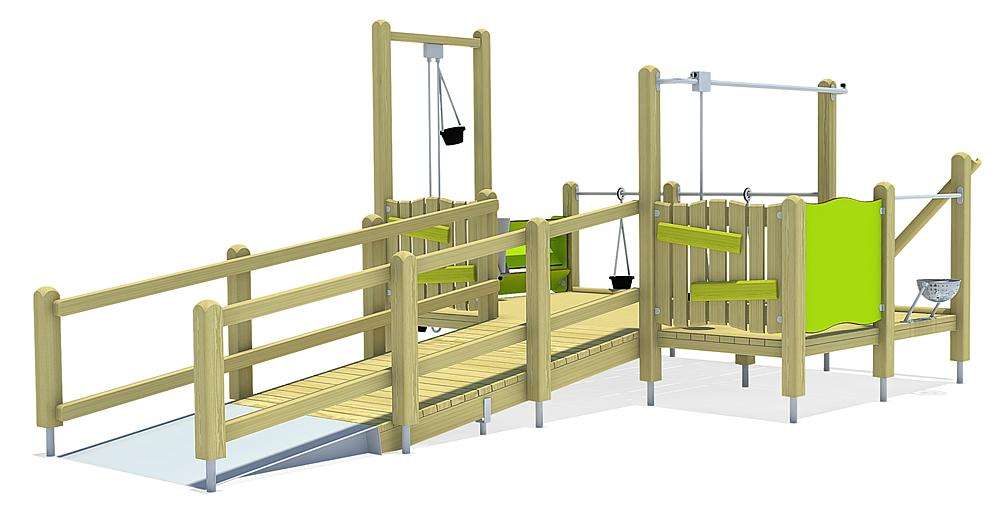

Small fishing boat Nola
eibe’s Little Fishing Cutter Nola is a prime example of a successful barrier-free play structure. It makes a visual impression thanks to its great look and at the same time offers various play options that inspire role-playing games – for example, a covered cabin with a steering wheel, a sand crane on “deck”, and a clever ladder in a fishing net design. The cutter is at ground level, so you can enter the cabin without having to climb steps or cross a threshold.


Integration seesaw
What should not be missing on any playground beside a swing and a slide? That’s right – a seesaw. But for many children, keeping their balance on the long piece of playground equipment is a challenge – especially for children with a physical disability. The eibe integration seesaw offers a wide seat and two handles at each end for additional support. This makes it possible to bounce happily without the risk of falling off.

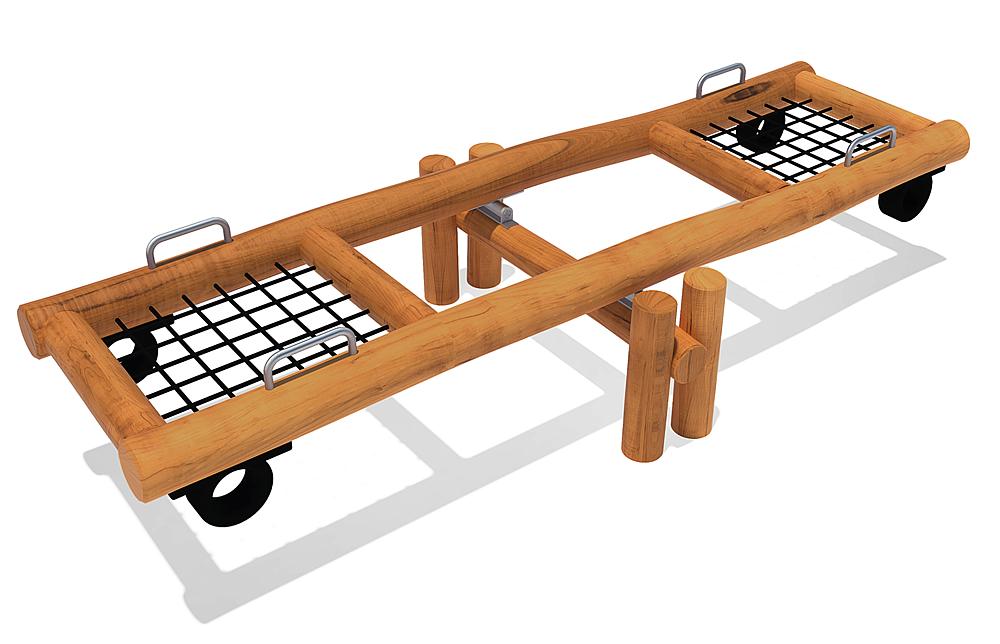
Integration Carousel
There is room for everyone on this carousel. Here, children with a physical disability as well as children without a physical disability can enjoy the feeling of speed together. The disc is at ground level so that wheelchair users can ride the carousel independently. There is no need to worry about falling because as soon as the safety bar is opened, a brake automatically brings the carousel to a stop. Carefree carousel rides guaranteed.
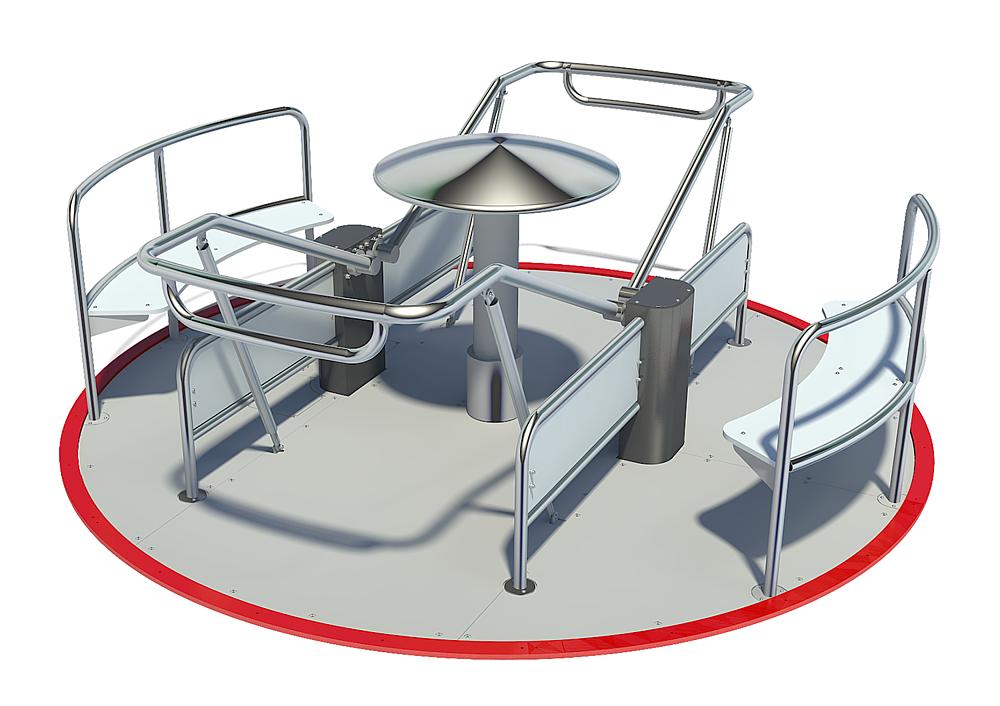
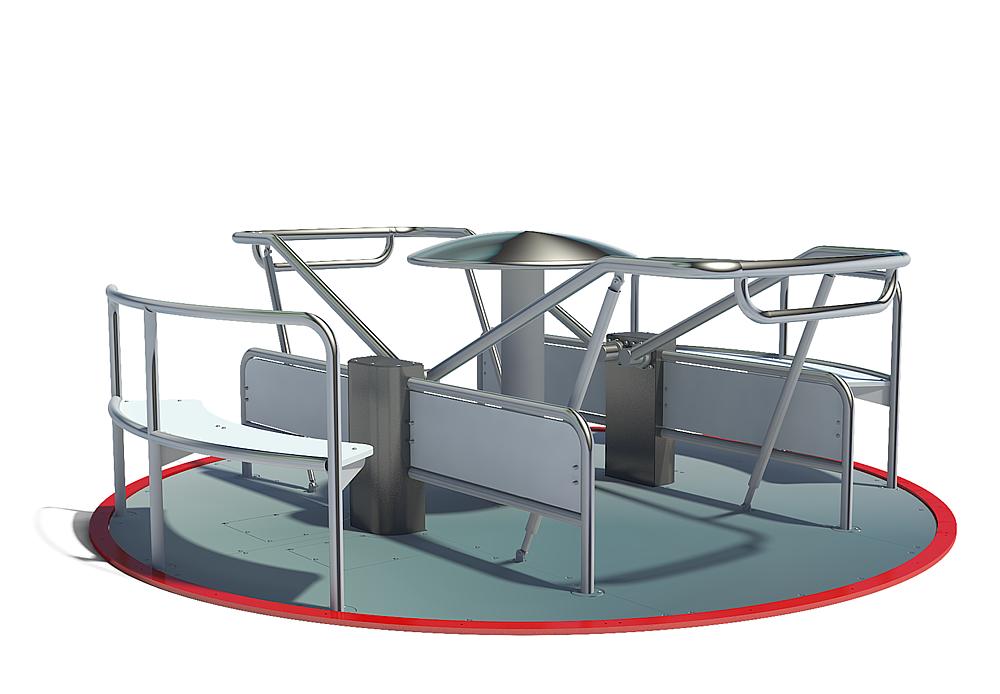
The eibe range offers even more play equipment for children with physical limitation. You can find an overview of the entire range in the current eibe Playground Worlds catalogue. More information on the topic of inclusion and children with disabilities can be found in the eibe inclusion brochure. There you can find out exactly which playground equipment is suitable for which type of physical disability. For a better overview, eibe marks these with the corresponding symbols:
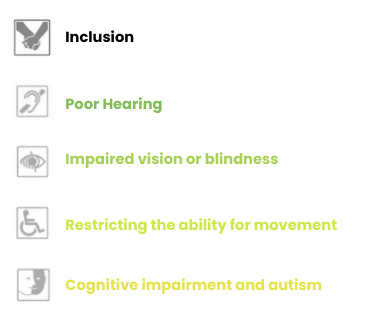
Playing in the Playground is not only fun but also contributes to your child’s education! You can read how in our blog post “Education through movement! The playground promotes learning”.
Picture 1: ClarkandCompany / Signature Kollektion / istockphoto.com
Picture 2: sweetmonster / Essentials Kollektion / istockphoto.com

